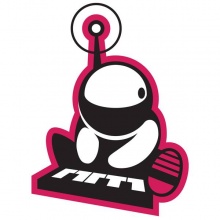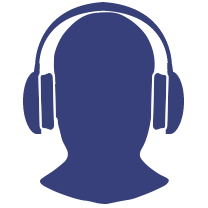Train Your Ears EQ Edition 2 by Diogo C

Product: Train Your Ears EQ Edition 2.0
Developer: Train Your Ears
Requirements: Windows 7+ or Mac OSX 10.5+
Price: €49
DRM: Unique serial number
The scope: Train Your Ears EQ Edition 2.0 is a nifty software that offers an environment where we can practice our listening skills with a series of equalization exercises. Its goal is to help trainees improve their understanding of equalizers and frequencies, so they can hopefully make better-informed decisions on their productions. In short terms, the training is basically about applying random equalization moves on any given piece of audio you choose, then you have to compare the EQ’d version to the original one and pick where exactly those EQ changes took place. A simple yet highly effective testing method that will put our listening skills to test.
Installation and setup: Download was basically instantaneous since it’s a very small zip folder with less than 20MB, and installation/registration were also very fast - I went with online authorization (serial number check) but there’s also an offline option. Once that’s done I launched the app it and was presented with three options: “play some music”, “choose an exercise” and “and start the training”, and clicking on them takes to their respective section on the actual Train Your Ears software. I clicked on “play some music”, where you can either choose a file on the audio player, use the noise player that blasts pink/white noise or use the live player, which taps audio coming from your music apps. To my surprise I had no audio files on my laptop other than Windows system sounds, so I went with the live player so I could stream audio from Spotify. This option requires the use of a third party app to route that audio to the Train Your Ears software, or you can use your soundcard’s loopback feature in case it offers such functionality, which might give the impression that it’s something complicated but fortunately there are two “view tutorial” buttons readily available so Mac and Windows users can sort this out. I’m on a Windows laptop, so I had to install the Virtual Audio Cable app and set it as the default playback device, which was quite easy I must say, and so I was set to start my training.
Training and exercises: training is done through a series of exercises which revolves around two modes, “correct” or “guess”. Guess is the basic method, available since the first version of Train Your Ears, and it’s basically about guessing which EQ parameters were used. You’ll hear the original signal, then the equalized signal, then guess which EQ moves were deployed and check if you’re right or wrong. Correct mode is a new method suggested by mastering engineer Bob Katz, and takes the challenge further by making the trainee correct the signal by applying an opposite EQ move, which possibly the most challenging here. You’ll listen the original signal, after that you’ll listen the EQ’ed signal, then you’ll have to make an EQ move that has to correct that EQ’ed signal, taking it back to its original state. Both categories have all sorts of variations to address cuts, boosts, bandwidth and equalizer shapes, and to cover most real-world scenarios such as equalizing with narrow or wide Q, resonant filters and even live feedback simulation. Train Your Ears comes with 11 pre-configured tests, which can be tweaked to taste or you can create your own custom test and also import other tests created by others, which is provided on the documentation. A routine of 10-15 minutes of training per day is recommended for best results and the software is designed in a way that allows the user to set his own pace. In my particular experience it was quite devastating to see (or not hear) how much I’d get the scores wrong, the bandwidth/Q exercises being particularly trick as more bands present, but with that I started to improve my scores and gain back my confidence. Bottomline was that it was definitely worth for reassessing my listening skills and also because of the “humble pie” factor that it will inevitably lead to after a few failed tests!
Sound quality: This criteria does not apply here, but I’d like to note that the equalizers and filters used for the exercises are actually okay, a bit drastic depending on the exercise but for the most part they’re mostly alright — these are exaggerated EQ moves most time but that’s for educational purposes of course. Nothing that will blow your ears or speakers though, so you can rest assured about that.
Ease of use: Train Your Ears EQ Edition 2 is very much easy and painless to use, with no major complications or roadblocks. There’s a very good documentation that can be instantly accessed from all parts of the software by clicking on a “need help?” button that’s always available on the lower right corner, which opens a browser window for the documentation, which is concise and provide satisfactory explanation for all the aspects of the software. Perhaps the problem here is that the documentation is only available online, so an internet connection is mandatory for it. One aspect I didn’t like about the software was that the software has a rather small sized window, which takes roughly a quarter of screen real estate on a resolution of 1080p, and to my surprise can’t be maximized or resized, which is a bummer. I’m a bit OCD about that and always want my windows maximized, so I hope that’s changed at some point.
Features: Train Your Ears offers quite a nice feature set for an app of this kind, it was very clever to have the Live Player option since a lot of people (myself included) have ditched their MP3 folders in favour of streaming services. Another cool feature is the exercise designer, which should give it some good longevity and keep tests interesting for quite a while. The fact that you can import other people’s exercises can extend it even further and the fact that you can keep your scoreboard is good for measuring your developments and hopefully your progress. On the other hand, I wouldn’t mind a bigger output meter and volume slider, and a real-time frequency analyzer could also be of help although that’s easily achievable through other means. Some further explanation on equalizers and how they work could also be added, that could be a good educational opportunity to explore on future versions, with exercises exploring the differences from graphic and parametric EQs and so forth. I’d also like to see a “Compressor Edition” at some point, as compression might be even more obscure to most people than EQs and frequency ranges are. A plug-in version for realtime training inside our DAWs would be cool as well, and I think this would be particularly helpful since it would enable some mixing-specific exercises, for example testing EQ moves on a particular track within a busy mix. This could be immensely helpful, maybe even more so than EQ’ing “finished” songs since it would be much closer to a real-world mixing/production scenario. Such training might be possible to do depending on your soundcard (RME comes to mind), but having a plug-in would definitely be a better solution and most importantly it would be available to everyone since it wouldn’t require specific soundcard features.
Bang for buck: Excellent value at $49 (euros) - it’s money waaaay better spent than adding yet another entry to your already bloated plug-in folder. Regardless of your skill level Train Your Ears can definitely be helpful, if you’re a newcomer to the mixing trade you’ll learn something that’s highly valuable to develop and establish listening skills, but if you’re a seasoned veteran it can be useful to keep your sharp. There’s no demo or trial version, which is never a good thing to the eyes of this reviewer, but this is probably one of the few situations in which watching a few videos should suffice.
Recommended for: anyone who dwells with equalizers in any capacity, be it professional or amateur, from musicians, producers, mixing and mastering engineers to audio equipment enthusiasts, all can benefit from what this marvelous piece of software has to offer.












